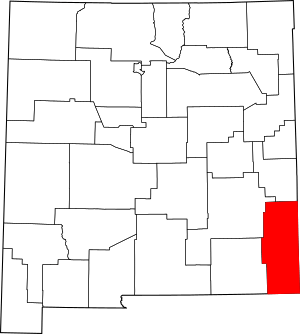The Center, New Mexico facts for kids
| Established | TBA |
|---|---|
| Research type |
|
| Budget | $1 billion |
|
Field of research
|
Renewable energy |
| Location | between Las Cruces and Deming, New Mexico, United States of America |
|
Operating agency
|
Pegasus Global Holdings |
Imagine a special place built to test out brand-new ideas and inventions! It's called The Center for Innovation, Testing and Evaluation, or just The Center for short. Its main goal is to try out exciting new technologies, especially those that use clean, natural energy like solar or wind power.
This place was planned to be like a small city, about 15 square miles big, near a town called Hobbs in New Mexico. But here's the cool part: no one would live there permanently! Because it wouldn't have any residents, some people called it a modern-day ghost town. The company behind this idea, Pegasus Global Holdings, needed a place to test their own inventions.
Construction was supposed to start in June 2012 but was put on hold a month later. The project seemed paused for a while. However, in 2015, Pegasus announced they were planning and building again. They hoped The Center would start working by 2018. Besides testing new tech, one big goal was to help science and technology research pay off.
What The Center Would Be Like
The main idea behind The Center was to test new technologies in a real-world setting. Think of it as a giant playground for inventions! It would let people try out "green technologies" and smart systems. For example, it could test how to make electricity using different new methods. These include solar energy, wind power, hydrogen, and geothermal energy.
Because The Center would be like a real city, testing there would be much more realistic than in a small laboratory. To be useful, it would have working utilities like water and electricity. It would also have telecommunications systems, just like any city.
The design of The Center was partly inspired by Walt Disney World. Just like Disney parks, the "fun stuff" (the buildings and testing areas) would be above ground. The important maintenance systems would be hidden mostly underground.
The fact that no one would live there was a big advantage. Researchers could test potentially risky technologies, like driverless vehicles, without putting anyone in danger. This also meant they could experiment with things that might be too difficult or expensive to do in a city where people live.
Where The Center Would Be Built
In May 2012, Pegasus first announced that Lea County, near Hobbs, was chosen. They picked this spot because land was available, the local community supported it, and there was already some infrastructure. Another possible location was Las Cruces.
The new "city" was planned to look like Rock Hill, South Carolina. Robert Brumley, the CEO of Pegasus, saw Rock Hill from an airplane. He thought it was perfect because it mixed old and new buildings and had both city and suburban areas.
When the project was first announced, the exact location in New Mexico wasn't set. Areas near Albuquerque, Santa Fe, and Las Cruces were considered. Pegasus wanted a spot close to major highways. This would make it easy to reach national labs, universities, and military bases.
New Mexico was chosen for several reasons. The state has strong leadership in science and technology. It also has good universities, national labs, and military bases. Plus, it has lots of renewable energy resources and available land.
The Center planned to make money by charging researchers to use its facilities. It would also sell extra utilities like power and water. Another way to earn money was by renting out land nearby. This land could be used to build a town for visitors to The Center. Pegasus hoped to start building in June 2012 and have it ready by June 2014.
However, in July 2012, Pegasus announced they were pulling out of the Lea County deal. This was due to problems getting the land. They started looking at other places. In June 2014, new reports said the project was delayed. This was because of decisions about the new Organ Mountains–Desert Peaks National Monument. Pegasus then picked a new spot for The Center. It would be along Interstate 10, between Las Cruces and Deming. This new location is in Doña Ana County and Luna County.
About Pegasus Global Holdings
Pegasus Global Holdings is the company behind The Center. They are based in Washington, D.C.. They estimated that building The Center would cost about 1 billion US Dollars. This would make it one of the few private companies to build such a large testing site.
Pegasus Global Holdings also expected The Center to create many jobs. They thought it would create 350 direct jobs and about 3,900 more jobs indirectly. The company has been working with the State of New Mexico to plan the project. The state has helped with studies and planning, but not with money.
In January 2013, Pegasus gave a presentation to the Dona Ana County County Commission. The commission showed support for the project.


